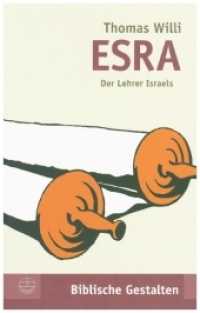- ホーム
- > 洋書
- > ドイツ書
- > Humanities, Arts & Music
- > Arts
- > history of arts
Description
(Text)
Im Zuge der Umsetzung des Reichskulturkammergesetzes verloren die christlichen Kirchen in Deutschland ihre kunstpolitische Selbstständigkeit. Die kirchlichen Kunstvereine wurden den neu gebildeten Reichsgemeinschaften christlicher Kunst unterstellt, die ihrerseits in die Reichskammer der bildenden Künste integriert wurden. Die kirchliche Kunst war damit ein Teil des NS-Systems geworden und unterstand der administrativen Kontrolle durch die staatlichen Behörden. Die Folgen der politischen und strukturellen Veränderungen für die kirchliche Kunst und Architektur sind bisher nur in Ansätzen untersucht worden. Wie hat sich die Kunstpolitik der Kirchen nach 1933 verändert? Welchen Einfluss hat das politische Verhältnis von Kirche und Staat auf die Entwicklung kirchlicher Kunst und Architektur genommen? Gab es gemeinsame Interessen von Kirche und Staat an der Kunst und Architektur? Welche Spielräume bestanden für die kirchlichen Auftraggeber und die Künstler, die im Dienste der Kirche arbeiteten? Welche Netzwerke und welche Finanzierungsmodelle wurden genutzt? Wie verhielten sich die Kirchen zur modernen Kunst und Architektur? Welche Ästhetiken und welche Semantiken wurden präferiert? Welche Anpassungsleistungen wurden erbracht?
(Text)
With the implementation of the Imperial Cultural Chamber Act (Reichskulturkammergesetz), the Christian churches in Germany lost their autonomy on arts policy. The church arts associations were placed under the of the newly formed authority for Christian art "Reichsgemeinschaften christlicher Kunst", which in turn was integrated into the Imperial Chamber of Fine Arts. Church art thus became part of the NS system and was subordinate to the adminstrative control of the state authorities. The consequences of political and structural changes for church art and church architecture have hardly been investigated at all. How did the arts policy of the churches change after 1933? What influence did the political relation between Church and state have on the development of church art and architecture? Did the Church and the state share common interests in art and architecture? What scope was there for the church commissioners and the artists working in the service of the Church? What networks and what means of funding were used? What was the churches attitude to modern art and architecture? What aesthetics and what semantics did they prefer? What adjustments were made to conform?
(Author portrait)
Prof. Dr. Martin Papenbrock lehrt Kunstgeschichte am Karlsruher Institut für Technologie, KIT (ehemals: Institut für Kunstgeschichte der Universität Karlsruhe).








